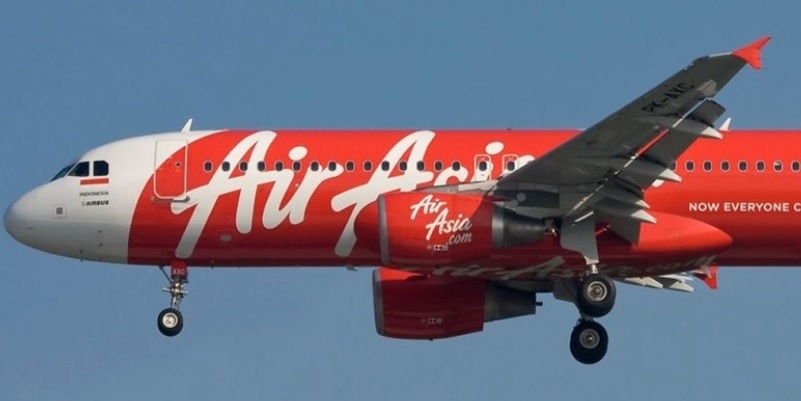
We all remember the nightmare that began to unfold in March 2014 when Malaysia Airlines Flight 370 completely disappeared. With questions unanswered, people jumped to potential conclusions such as a catastrophic crash in the ocean, a terrorist plot, a fire on-board, and even missing survivors stranded on some remote island. At the time, we began asking those in the aviation industry, “Why haven’t we made greater strides in geo-tracking commercial aircraft?”
We’ve had plenty of warning before now. Many will recall the 2009 disappearance of Air France Flight 447, which was missing for two years before wreckage was ever found. Yet, here we find ourselves again. When news broke on December 28 that AirAsia Flight 8501 had gone missing, it seemed like an eerie case of déjà vu. Wreckage was eventually found in the Java Sea, indicating that the plane had crashed, but the world waited with bated breath for several days before that conclusion was announced publicly.
In a day and age when we have refrigerators that can alert us we’re running low on milk and advertisements that geo-target consumers based on preferences logged into their smart devices, we’ve got to stop and wonder why it is taking the airline industry so long to come up with a solution for better tracking aircraft.
Ironically, just one month ago, the Aircraft Tracking Task Force presented its recommendations for improved aircraft tracking standards to the International Civil Aviation Organization (ICAO).
In those recommendations, the Aircraft Tracking Task Force suggested that all airlines first take a look at what types of tracking services and devices are presently available. From there, the task force recommended that airlines take the next year to consider what upgrades may be available for their existing equipment. And within the next three years, the task force suggested that airlines begin to monitor the types of new tracking technologies that are becoming available – with no request or insinuation that those new technologies should be implemented. What this really boils down to: there is no real solution anticipated in the near-term.
Below are the specific phased recommendations:
• In the short term, airlines should make use of what is already available in their fleets and areas of operation.
• In the near term (approximately 1 year), airlines should look at the business case for upgrading equipment to meet the performance criteria
• In the medium term (approximately 3 years), airlines should monitor new technologies which will become available, including space-based systems.
• In parallel, airlines should work with manufacturers and other industry stakeholders to explore the possibility of making systems tamper proof.
The task force’s recommendations will be considered in ICAO’s development of a Global Aeronautical Distress and Safety System (GADSS). The task force also brought up the possibility of requiring automatic dependent surveillance – broadcast (ADS-B) technology in commercial aircraft. ADS-B is a cooperative surveillance technology in which an aircraft determines its position via satellite navigation and periodically broadcasts it, enabling it to be tracked.
At the time that the task force’s recommendations were released, International Air Transport Association (IATA) CEO Tony Tyler stated, “Passengers can be reassured that MH370 was an extremely rare, if not unique event. Even though aircraft cannot be tracked in all cases, flying is safe. Over 100,000 flights operate safely every day. And new technology will play an important role in making the system even more robust.”
That statement came just a few weeks before the disappearance of AirAsia Flight 8501.
As suspected, the debate surrounding what can be done industry-wide to improve aircraft tracking has heated up yet again. And the louder the outcries, the more likely the government is to step in and start making demands.
In fact, much to the annoyance of major commercial airlines, the European Union announced even before the AirAsia crash that it is considering requiring aircraft tracking. If lukewarm recommendations aren’t soon upgraded to a legitimate plan of action that shows the industry is indeed taking steps to better track aircraft, government mandates may be in order.
Back in May 2014, in the aftermath of the Malaysia Airlines disappearance, a senior official with the United Nations said that major airlines really want the real-time tracking for aircraft, indicating that cost was not a concern.
At that time, when asked whether the cost of employing new standards would be problematic for airlines, Nancy Graham, the director of ICAO's Air Navigation Bureau, stated, “Not at all, they're absolutely in solidarity. There's no price you can put on safety or certainty on where the aircraft are.”
So, what’s the hold up?
IATA’s Tyler stated, “[The ATTF] took a serious and practical look at the recommendations. While they are committed to improving, they could not fully endorse what would be practically unachievable for some.”
He continued, “[The recommendations made by the task force] address the inescapable truth of MH370 that the transponder stopped working. Without speculating on what happened, redesigning the aircraft’s failsafe systems to make ensure that transponders cannot be shut off is well beyond the near-term focus of the task force. So the public should be aware that there is no silver bullet solution on tracking.”
What happens next remains to be seen, but pressures are rising for the industry to come up with some solutions that can make a difference quickly. And while consumers learn more of the complexities involved in tracking commercial aircraft, the fact remains that answers could be learned and tragedies may be prevented by updating aircraft with next-generation tracking technology.
Via Mashable, Reuters and Runway Girl Network
Advertisement





